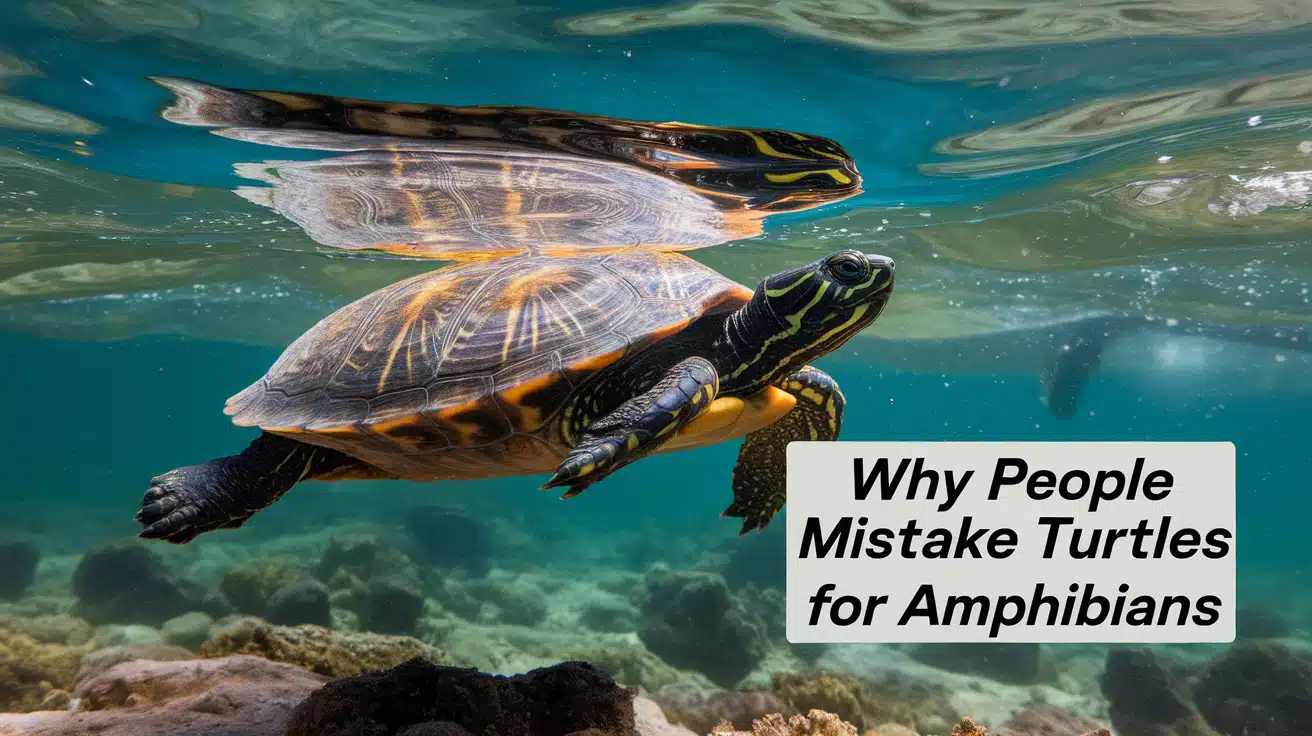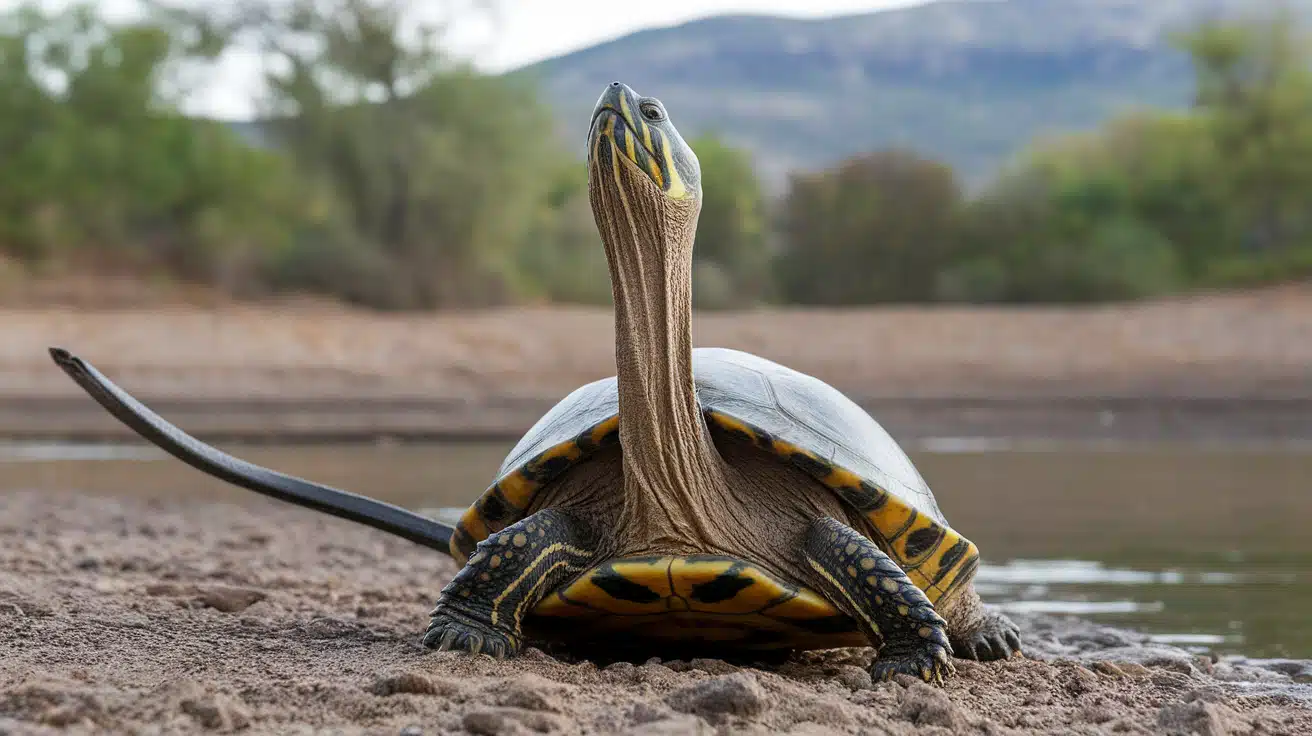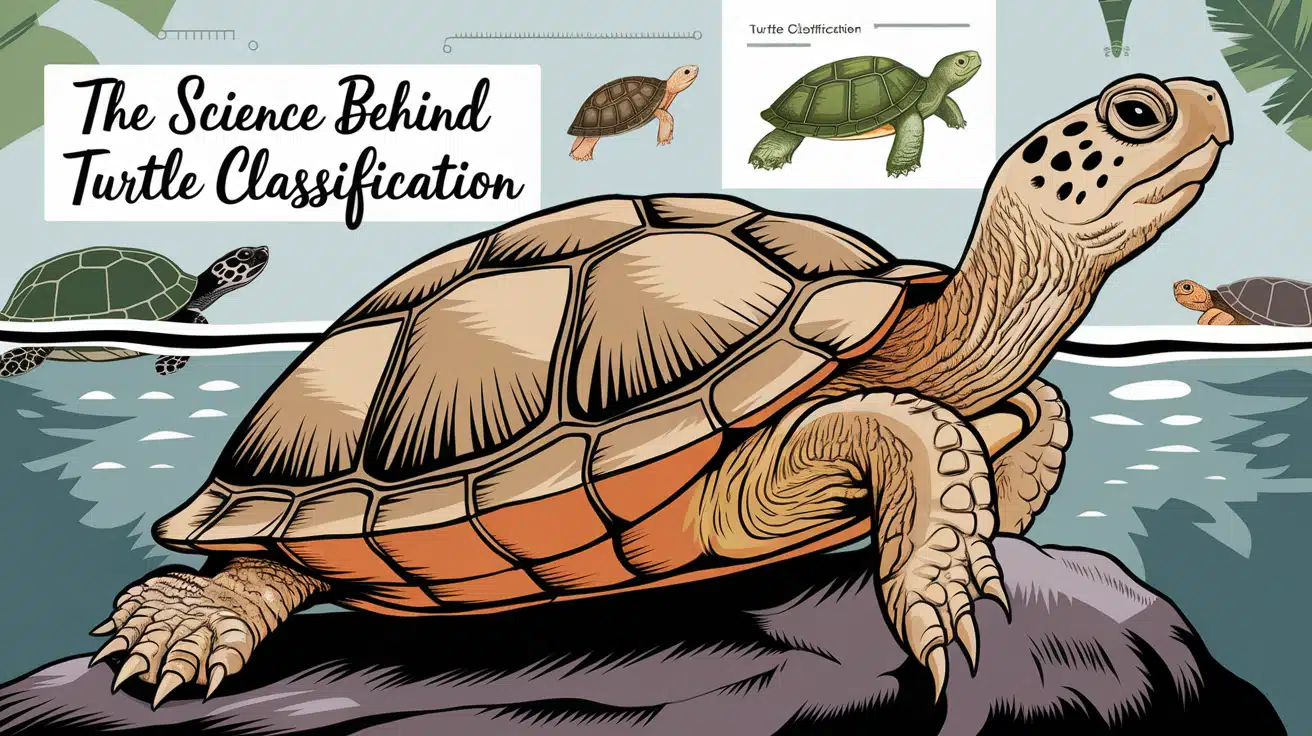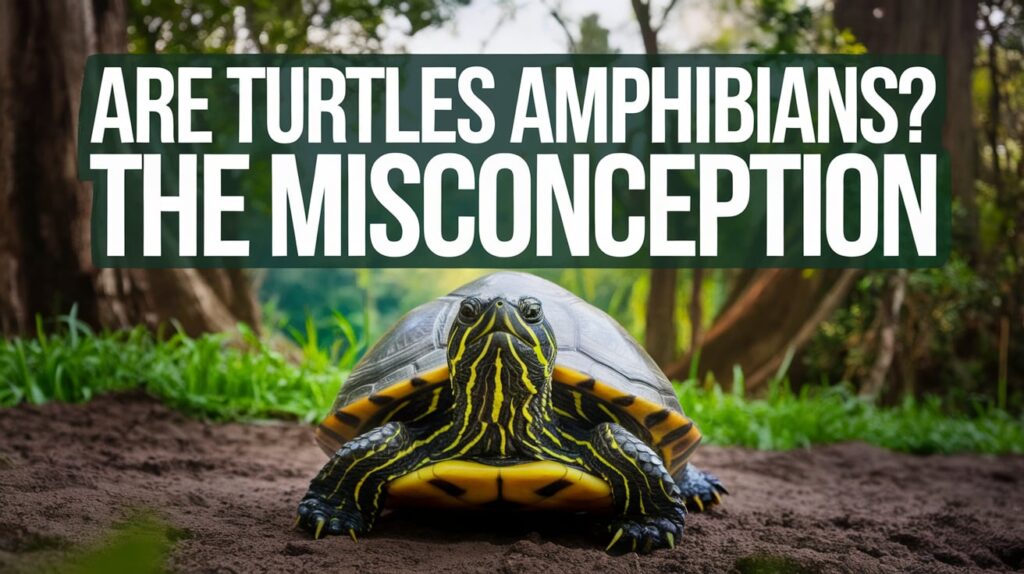Many people mix up turtles with amphibians due to their water-loving habits and similar looks to frogs. They’re not alone if they’ve ever wondered about this too!
The truth is that understanding what makes a turtle different from a true amphibian matters for anyone curious about these creatures.
This article will clear up this common mix-up once and for all with facts and simple explanations.
Readers will learn about the key differences between turtles and amphibians, how to tell them apart, and why knowing the right group matters for these animals.
Let’s start right away!
What Defines an Amphibian
An amphibian is a cold-blooded animal that can live both in water and on land.
The word “amphibian” comes from the Greek word amphibious, meaning “double life,” which perfectly describes how these creatures spend part of their lives in water and part on land.
The most common types of amphibians are frogs, toads, salamanders, and newts.
Key Features of Amphibians:
- Life Cycle: Amphibians begin life as larvae in water (like tadpoles) and later undergo metamorphosis to develop lungs and legs for life on land.
- Skin: Their moist, smooth skin is free of scales, which helps them absorb water and oxygen directly from their environment.
- Breathing: Amphibians breathe through gills when young and develop lungs as they grow.
- Eggs: Their eggs are soft, jelly-like, and laid in water because they lack a protective shell.
- Cold-Blooded: They rely on the environment to regulate their body temperature.
Turtles vs Amphibians: Key Differences
| Feature | Turtles (Reptiles) | Amphibians |
|---|---|---|
| Skin Type | Dry, scaly skin to prevent water loss | Moist, permeable skin for water and oxygen absorption |
| Egg Type | Hard-shelled eggs laid on land | Soft, jelly-like eggs laid in water |
| Breathing | Lungs from birth, cannot breathe through skin | Gills in early life, then develop lungs |
| Life Cycle | Hatch as mini-turtles, no metamorphosis | Larvae (like tadpoles) undergo metamorphosis |
| Temperature Regulation | Cold-blooded, rely on basking for warmth | Cold-blooded, need moist environments |
| Habitat | Live in water and land, but rely on lungs | Start in water, later move to land |
| Classification | Reptiles | Amphibians |
While both turtles and amphibians share water and land habitats, their skin, eggs, breathing, and life cycles make them completely different.
Turtles are reptiles, not amphibians, as they hatch fully developed and don’t go through metamorphosis.
Why People Mistake Turtles for Amphibians

Many people confuse turtles with amphibians because of their shared connection to water and land.
However, this mix-up happens due to several overlapping traits and misconceptions about their biology and habitats.
- Firstly, turtles are often seen swimming in ponds, lakes, and rivers, just like frogs and salamanders, leading people to assume they share similar life cycles. Amphibians start life in water and later transition to land, while turtles are born fully developed and rely on lungs for breathing from birth.
- Another reason for the confusion is the perception that all water-loving animals are amphibians.
Turtles, though aquatic or semi-aquatic, are reptiles with scaly skin and hard-shelled eggs, unlike amphibians, which have moist skin and jelly-like eggs. - Lastly, amphibians undergo metamorphosis—a complete transformation from larvae to adults—whereas turtles hatch as miniature versions of adults with no drastic changes in appearance.
Despite their similar environments, turtles’ biological features firmly place them in the reptile category.
Reptilian Traits That Set Turtles Apart

1. Hard, Protective Shell:
Turtles have a unique bony shell made of a carapace (top) and plastron (bottom), providing protection and structural support—something amphibians completely lack.
2. Dry, Scaly Skin:
Unlike amphibians with moist skin, turtles have dry, scaly skin that prevents water loss and offers protection in various environments.
3. Hard-Shelled Eggs Laid on Land:
Turtles lay hard-shelled eggs in nests on land, unlike amphibians’ soft, jelly-like eggs laid in water, ensuring better protection for the developing embryo.
4. Lung-Based Breathing:
Turtles breathe solely through lungs from birth, even aquatic species. Amphibians, in contrast, begin life breathing through gills.
5. Cold-Blooded with Sun-Basking Behavior:
As ectothermic reptiles, turtles regulate their body temperature by basking in the sun, a typical reptilian trait not commonly seen in amphibians.
6. No Metamorphosis:
Turtles hatch as fully-formed miniature adults and do not undergo metamorphosis, unlike amphibians that transform dramatically from larvae.
7. Clawed Feet for Digging and Climbing:
Turtles possess clawed limbs adapted for digging nests and navigating diverse terrains—a feature not found in amphibians.
8. Keratinized Beak Instead of Teeth:
Turtles have a keratinized beak for cutting food rather than teeth, which is a defining trait among reptiles.
9. Longevity and Slow Growth:
Reptilian biology allows turtles to have long lifespans, with some species living over 100 years, which is rare among amphibians.
10. Wide Habitat Range:
Turtles thrive in a variety of environments, from deserts to oceans, showcasing the adaptive resilience typical of reptiles.
The Science Behind Turtle Classification

Turtles are not amphibians—they are reptiles belonging to the class Reptilia and the order Testudines (Chelonia).
Their classification is based on unique biological, anatomical, and evolutionary traits that separate them from amphibians and other animals.
- Class: Reptilia – Turtles share core reptilian traits like dry, scaly skin, lung-based breathing, and cold-blooded metabolism.
- Order: Testudines (Chelonia) – This order includes all turtles, tortoises, and terrapins, defined by their protective shell structure.
- No Metamorphosis – Unlike amphibians, turtles hatch as fully-formed miniatures of adults without undergoing larval stages.
- Hard-Shelled Eggs – Turtles lay calcium-rich, hard-shelled eggs on land, a key reptilian trait that contrasts with amphibians’ jelly-like eggs.
- Lung-Based Respiration – Turtles rely entirely on lungs for breathing from birth, while amphibians initially use gills before developing lungs.
- Evolutionary History – Turtles have existed for over 220 million years, evolving from early reptiles rather than amphibians.
Evolutionary Connection
Genetic studies and fossil records confirm that turtles are closely related to crocodiles, lizards, and birds rather than amphibians. Their ancient lineage dates back to the Triassic period, making them one of the oldest surviving reptile groups.
The Bottom Line
The differences between turtles and amphibians might seem small at first glance, but they’re actually quite significant.
From their scaly skin and unique shells to their breathing mechanisms and reproductive habits, turtles stand apart as true reptiles.
Understanding these distinctions isn’t just about winning trivia nights – it helps us appreciate how different animal groups have evolved to thrive in their environments.
Next time someone mentions that turtles are amphibians, you’ll be ready to explain why that’s not quite right.
















